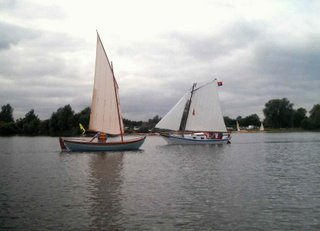One of the big problems with cameraphones is that the computer chip is designed to make phone calls rather than edit pictures, so even a simple operation like storing the image on the memory card can take seconds. Try and edit an image and you could be waiting for an age, twiddling your thumbs. Swedish company Scalado reckons they will be able to improve the situation in the future with new phone software that uses sophisticated mathematical techniques to compress the images to such tiny files that editing takes just a moment.
They are also trying to preempt the forthcoming JPEG2000 standard for image compression of course.
Here's the release in full:
SCALADO CAPS ELIMINATES FRUSTRATING WAIT TIMES ASSOCIATED WITH IMAGE PROCESSING ON CAMERA-PHONES
Scalado offers key benefits of JPEG2000, with existing JPEG
Scalado AB, a leading developer of imaging software, has today confirmed that the latest version of CAPS(tm), its imaging software for camera-phones, is already offering benefits normally highlighted as advantages of JPEG2000, the highly publicised next-generation image format based on wavelet compression. CAPS, however, has managed to overcome the interoperability problems, lack of standardisation, and the content protection issues that have so far undermined the widespread adoption of JPEG2000.
Image compression technologies are used to make image files smaller, either for more efficient storage or for transmission over a network, and are therefore critical to the development of the digital imaging market. For this reason, CAPS currently provides a highly efficient way of viewing and zooming images. As part of the Scalado CAPS imaging platform, its patented RAJPEG(tm) JPEG codec technology, enables 'Region of Interest' coding. This enables very fast image processing while viewing, editing and transferring images. It also reduces the need for heap (RAM) memory by 25x.
"Phone manufacturers understand the value of using powerful image processing technology, since it allows their end-users to work with high-resolution images quickly and easily," says Mats Jacobson, CEO, Scalado. "Although JPEG2000 is being touted as the future standard for full-frame image compression, its adoption remains slow and problematic. However, we can now provide some of the key JPEG2000 benefits on standard JPEG images - such as 'Region of Interest', 'Lossless features' and reduced need for processing power, instead of waiting for the adoption of the new JPEG standard."
RAJPEG technology can encode/decode JPEG images whilst reducing memory requirements significantly by processing JPEG input and output images in the compressed domain. This innovative approach to data compression enables viewing of any region of a JPEG image without needing to access the previous parts of the image.
As such, RAJPEG reduces the amount of memory required by up to 25 times, and increases speed for image manipulation by up to 10 times. Parts of mega-pixel images in any scale can be opened, and zoomed into any details consuming only fractions of CPU and memory compared to traditional JPEG decoders. Better still, all operations can be performed in real-time on the phone's display.
For example, to crop an area of 320x240 from a 3 Mega Pixel JPEG image and save it, Scalado's solution will only use 700kB of memory, compared with the 6MB required using traditional methods. Likewise, the process will take less than 1 second to complete, compared with almost 10 seconds required by most existing software technologies. In addition to this improved compression performance, Scalado's CAPS platform also offers more sophisticated image scaling and editing features.
Scalado CAPS is being well received by the major camera phone manufacturers as a highly efficient solution, providing excellent user experience and compelling features. The software runs on any operating system supporting ANSI-C.
 The ultimate cameraphone is getting close. The N95 isn't quite it, but it must be near to the perfect combination of phone and camera.
The ultimate cameraphone is getting close. The N95 isn't quite it, but it must be near to the perfect combination of phone and camera. The main camera lens has a cover, which is an improvement on the highly losable lens cap on the N93.
The main camera lens has a cover, which is an improvement on the highly losable lens cap on the N93. The N95 is set for sale in the new year at about £300 without a contract.
The N95 is set for sale in the new year at about £300 without a contract.

